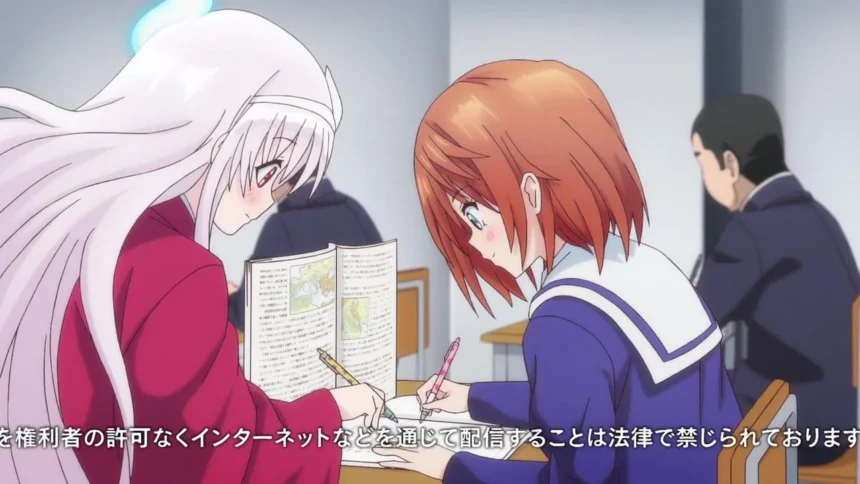Doujen Moe appears as a relatively new coined term in anime / manga fan communities. It blends two Japanese fan-culture concepts: doujin (自⼈, often used to mean self-published or fan-made works) and moe (萌え, an aesthetic term describing an affectionate emotional response toward characters).
- “Doujin” traditionally refers to independent or self-published works — often manga, novels, illustrations, or games — created by fans or amateur artists rather than commercial publishers.
- “Moe” denotes characters, traits, or styles that evoke endearment, cuteness, affection, or emotional attachment from fans.
By merging the two, Doujen Moe suggests a creative space where fan-driven works emphasize emotional appeal, charm, and deep connection to characters or feelings. Several recent blog articles describe Doujen Moe as a movement that foregrounds authenticity, emotional resonance, and creative freedom
Though not yet a widely established term in academic media or major fan glossaries, Doujen Moe has begun appearing in trend articles and fandom blogs as a shorthand for this emergent aesthetic.
Key Characteristics & Aesthetic Traits
What sets Doujen Moe apart (or what traits people associate with it) are certain creative and emotional features:
1. Emotional emphasis over spectacle
Doujen Moe works tend to prioritize gentle emotional stories, tender moments, character vulnerability, or introspective scenes — rather than big action or flashy spectacle.
2. Soft, appealing visual design
Art style often leans toward “cute,” soft lines, pastel colors or gentle shading, designs that invite sympathy or affection. This aligns with “moe” aesthetics in anime culture.
3. Independence & niche creativity
Because of its “doujin” component, many Doujen Moe creations remain self-published, niche, or community-shared — resisting mass commercialization or mainstream constraints.
4. Community and interactivity
Doujen Moe is deeply tied to fan communities: sharing, feedback, remixing, collaboration, and a blurred line between reader and creator. The sense of belonging and shared language is part of what defines it.
5. Genre fluidity
Works may span a wide range of genres—romance, slice-of-life, fantasy, or occasional magical realism—but with a consistent thread of emotional intimacy or character focus rather than genre constraints.
These traits combine to make Doujen Moe less a strict genre and more an aesthetic sensibility within the broader doujin / fan art / indie creation space.
How Doujen Moe Differs from “Standard” Doujinshi or Fan Works
Because Doujen Moe includes “doujin,” a natural question is: how is it distinct (if at all) from standard doujinshi or fan works?
Emphasis on “moe” as a core
While doujinshi may cover many styles — parody, drama, action, fan sequels — Doujen Moe explicitly centers “moe” elements (emotional appeal, cuteness, attachment). That makes it narrower in tone.
Artistic and emotional consistency
Doujen Moe tends to maintain consistent emotional tones; the aesthetic expectations from community may pressure creators to adhere to a recognizable “feel.” This is different from general doujin works that might experiment wildly.
Community labeling and identity
Because creators and fans use the term “Doujen Moe” itself, it becomes a community label. Works that fit the vibe may be tagged or recognized as Doujen Moe, helping participants find each other and define a niche identity.
In short: Doujen Moe = doujin + moe, but the emphasis is more emotional, aesthetic, and community-driven rather than genre or narrative alone.
Doujen Moe in Online Communities & Platforms
The growth and visibility of Doujen Moe are closely tied to how digital platforms and fandom spaces enable its creation and spread.
Platforms & distribution
- Art / illustration sites (e.g. Pixiv, DeviantArt) host Doujen Moe artwork and mini-comics.
- Fan platforms / doujin marketplaces (e.g. Booth, niche doujinshi sites) allow creators to distribute work directly to fans.
- Social media & microblogs (Twitter / X, Tumblr, Instagram) help spread tags, previews, or highlight works.
- Forums, Discord servers, Reddit communities offer space for discussion, feedback, and collective curation.
These platforms reduce traditional barriers—no need for a publisher, easier reach to global fans, and more immediate response loops.
Globalization & adaptation
Although the roots are in Japanese fan culture, DoujenMoe is becoming global. Fans across the world adopt the terms, reinterpret styles, or mix local narratives with the aesthetic.
This cross-cultural exchange broadens what DoujenMoe can mean — new motifs, hybrid genres, or blending local folklore with moe sensibility.
Visibility via conventions & fan events
At anime / manga conventions, creator alleys sometimes include Doujen Moe booths or artist exhibits. Some fandom panels or discussions mention DoujenMoe as a trending aesthetic or theme
These in-person settings help connect online communities, facilitate selling of prints / zines, and solidify the cultural presence of DoujenMoe in fan culture.
Challenges, Criticisms & Ethical Considerations
As Doujen Moe gains attention, several debates and challenges arise:
Commercial co-option risk
Some worry that as DoujenMoe becomes more visible, commercial entities may try to exploit the aesthetic—mass-produced merchandise, formulaic works, or brand dilution. This could erode the grassroots, fan-driven authenticity.
Content boundaries & sensitive themes
Because fan / doujin works sometimes push boundaries, DoujenMoe may include romantic or suggestive content, potentially involving sensitive themes. The community must navigate age-appropriateness, respectful depiction, and consent. Critics often caution about works that sexualize young or vulnerable characters.
Oversaturation & creative pressure
As more creators adopt the label, expectations may constrain innovation—some feel pressure to conform to “the DoujenMoe style” or emotional formula, risking homogenization
Intellectual property / copyright issues
Since fan works often draw on existing characters or series, creators must remain cautious about copyright and legality—especially in commercial distribution or public display. This is a challenge across all doujin culture.
Navigating these criticisms is part of maturation: communities often evolve guidelines, tags (safe / mature), and respectful standards to preserve creativity and safety.
How to Get Started or Appreciate Doujen Moe
For fans or aspiring creators interested in Doujen Moe, here are suggestions and tips:
For fans / consumers
- Explore tags: search for “DoujenMoe,” “doujin moe,” or community hashtags on art platforms and social media.
- Support creators: buy prints, digital comics, or tip artists when possible — this sustains the indie ecosystem.
- Engage with community: comment, share, and discuss works to help visibility and connection.
- Respect maturity tags: be mindful of content ratings, and avoid works that are inappropriate or violate laws or platform rules.
For creators / artists
- Start small & experimental: sketch a short emotional scene, a character moment, or personal vignette.
- Emphasize emotion: prioritize emotional resonance, charm, and character connection over plot complexity.
- Tag appropriately: use “DoujenMoe,” “moe,” “doujin”, maturity flags, and related tags so audiences can find and filter.
- Balance freedom & responsibility: create authentically, but remain aware of content boundaries and legal constraints.
- Collaborate & learn: join fan communities, attend digital workshops, exchange feedback.
- Document & evolve your style: track your growth, explore variations in mood, tone, or genre while retaining core emotional feeling.
By contributing diverse voices and perspectives, creators reinforce the vibrancy of DoujenMoe rather than letting it stagnate.
Conclusion: Doujen Moe as Creative Expression and Community Identity
Overall, Doujen Moe is a rising fan-aesthetic movement that fuses the independent spirit of doujin works with the emotional, affectionate draw of moe. It highlights the value of creativity, emotional sincerity, community, and aesthetic resonance in fandom culture.
Though still emerging and not yet mainstream, DoujenMoe’s presence in blogs, social media, and conventions suggests it’s becoming a recognized marker within fan communities. It offers a space for creators and fans to connect around shared emotional experiences and artistic expression.
As the movement grows, its challenge will be to maintain authenticity, support diversity of voices, and resist commercial homogenization. For now, DoujenMoe stands as an evocative example of how fandom continually reinvents itself, blurring the lines between creator, consumer, and emotional storyteller.








